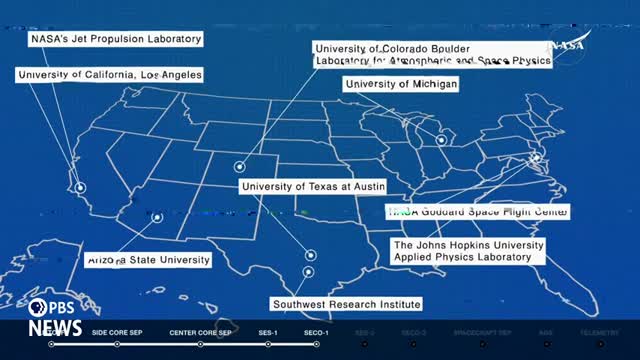Europa Clipper mission set to unveil secrets of icy moon
This article was created by AI summarizing key points discussed. AI makes mistakes, so for full details and context, please refer to the video of the full meeting. Please report any errors so we can fix them. Report an error »

In a recent government meeting, officials provided an in-depth overview of the Europa Clipper mission, highlighting the advanced scientific instruments designed to explore Jupiter's moon, Europa. The mission, developed in collaboration with the Johns Hopkins Applied Physics Laboratory (APL), aims to investigate the moon's icy surface and the potential ocean beneath it.
The presentation featured nine key instruments, with the first four showcased, including the ICE instrument, which consists of both wide and narrow-angle cameras capable of capturing high-resolution images of Europa. Another significant tool is the Ethemis thermal imager, designed to detect warmer areas on the ice surface, indicating possible water activity beneath.
Spectroscopy instruments, MICE and Europa UVS, were also discussed. These instruments will analyze how light interacts with materials on Europa, providing insights into the moon's composition. The team emphasized the innovative approach of using imaging and spectroscopy to gather data without landing on the surface.
Bobby Brown, head of APL's Space Exploration Sector, emphasized the mission's uniqueness, noting its extensive development over 15 years and the spacecraft's impressive size and capabilities. He highlighted APL's contributions, including the propulsion module and several scientific instruments, which are crucial for understanding Europa's subsurface ocean.
The meeting also introduced the remaining five instruments, including a mass spectrometer and dust detector, which will analyze particles in Europa's environment. Additionally, ice-penetrating radar and magnetometers will help determine the thickness of the ice and study the magnetic fields surrounding the moon.
As the Europa Clipper continues its journey, the team is eager to gather data that could reveal more about this intriguing celestial body, potentially shedding light on the conditions for life beyond Earth. The mission represents a significant step forward in planetary science, with expectations high for the discoveries that lie ahead.
The presentation featured nine key instruments, with the first four showcased, including the ICE instrument, which consists of both wide and narrow-angle cameras capable of capturing high-resolution images of Europa. Another significant tool is the Ethemis thermal imager, designed to detect warmer areas on the ice surface, indicating possible water activity beneath.
Spectroscopy instruments, MICE and Europa UVS, were also discussed. These instruments will analyze how light interacts with materials on Europa, providing insights into the moon's composition. The team emphasized the innovative approach of using imaging and spectroscopy to gather data without landing on the surface.
Bobby Brown, head of APL's Space Exploration Sector, emphasized the mission's uniqueness, noting its extensive development over 15 years and the spacecraft's impressive size and capabilities. He highlighted APL's contributions, including the propulsion module and several scientific instruments, which are crucial for understanding Europa's subsurface ocean.
The meeting also introduced the remaining five instruments, including a mass spectrometer and dust detector, which will analyze particles in Europa's environment. Additionally, ice-penetrating radar and magnetometers will help determine the thickness of the ice and study the magnetic fields surrounding the moon.
As the Europa Clipper continues its journey, the team is eager to gather data that could reveal more about this intriguing celestial body, potentially shedding light on the conditions for life beyond Earth. The mission represents a significant step forward in planetary science, with expectations high for the discoveries that lie ahead.
View full meeting
This article is based on a recent meeting—watch the full video and explore the complete transcript for deeper insights into the discussion.
View full meeting